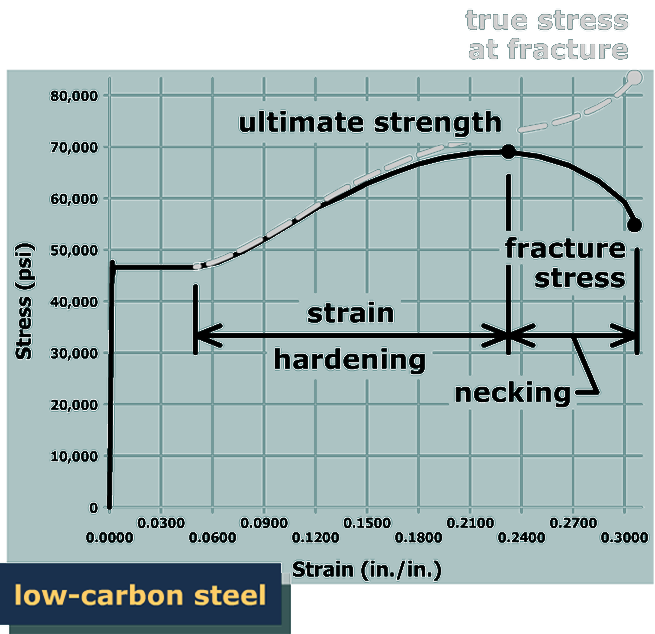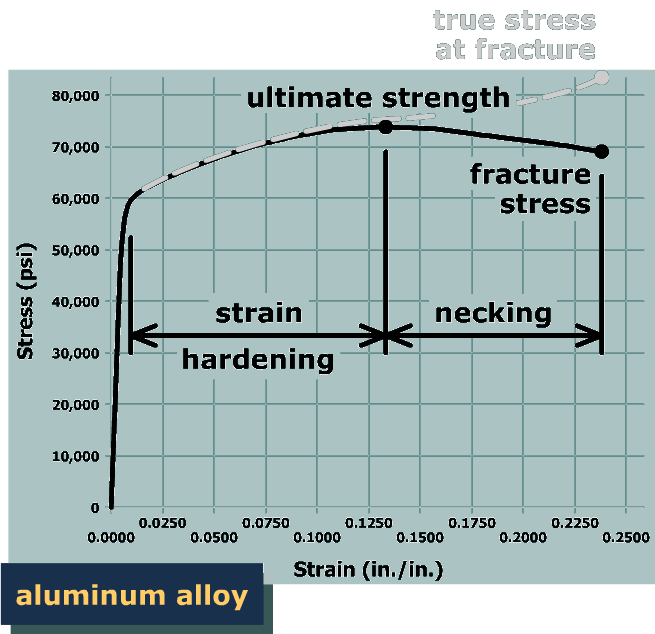If one were to measure the specimen diameter during the tension test and compute the true stress based on the reduced diameter, one would find that the true stress continues to increase above the ultimate strength.


If one were to measure the specimen diameter during the tension test and compute the true stress based on the reduced diameter, one would find that the true stress continues to increase above the ultimate strength.

